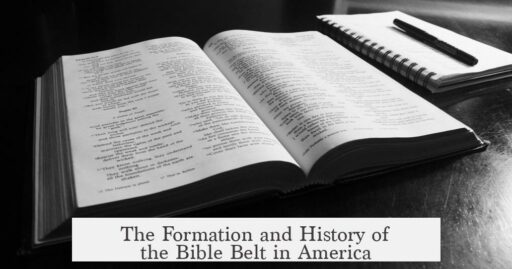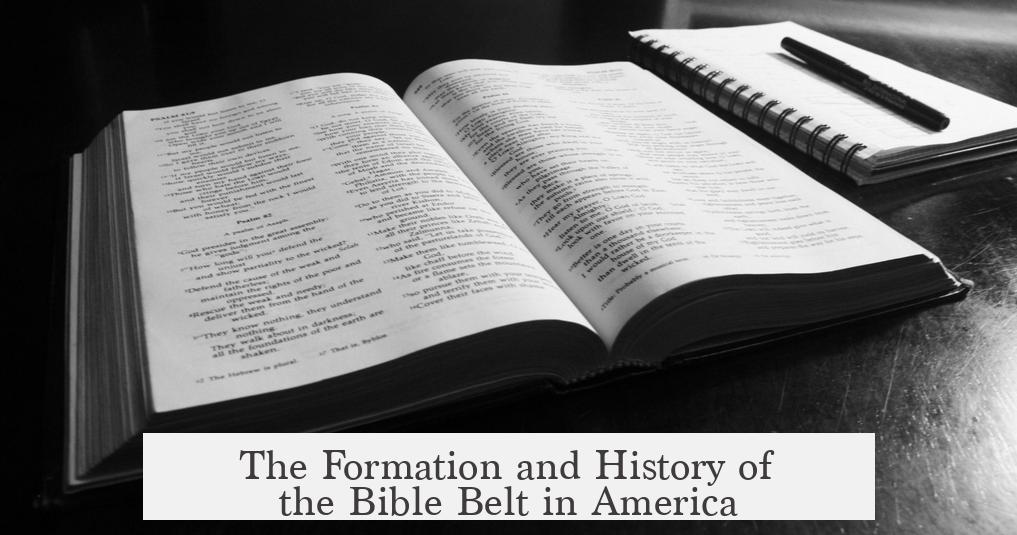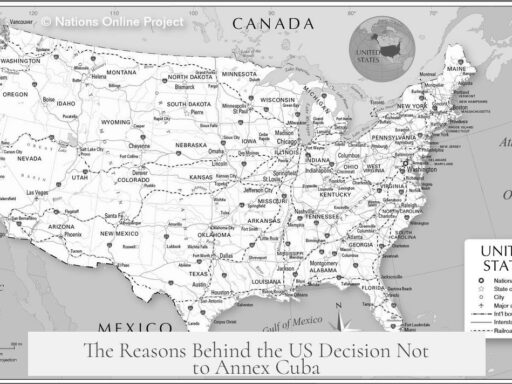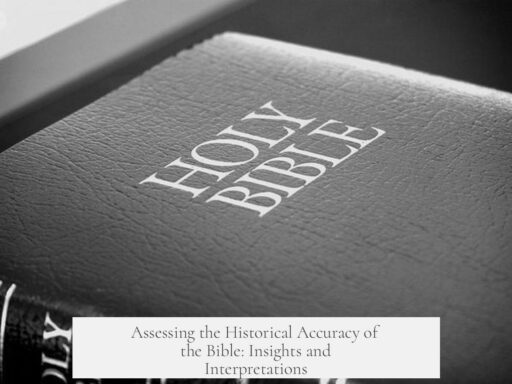The Bible Belt became the Bible Belt through a unique combination of historical culture, religious movements, social responses to modernity, and clerical leadership that deeply rooted evangelical Christianity in the Southern United States.
The term “Bible Belt” was coined around 1920 by the journalist H.L. Mencken, who described it as the region where people credit the Bible’s literal truth and religious leaders hold public influence. Although Mencken never defined its precise boundaries, scholars generally agree it encompasses much of the Southern U.S., where evangelical Protestantism is dominant.
The Bible Belt has deep roots in Southern culture, dating back before the Civil War. Southern society traditionally emphasized rural living, values of honor, and distinct social norms differing from the North. These cultural traits created fertile ground for religious influence, especially evangelical Christianity, to flourish.
In the early 1800s, evangelical movements gained momentum across rural America. Baptist and Methodist denominations expanded rapidly in the South and trans-Appalachian West. These groups stressed conversion and personal rebirth rather than intricate theological doctrines, making their message accessible and compelling in rural communities. The evangelical revival was not isolated but connected through networks of preachers and communication, linking Southern believers to a larger religious movement.
By the early 1900s, Southern churches experienced renewed vigor as a response to what was perceived as the threat of modernity. Evangelicals resisted social changes and moral challenges brought by industrialization and urbanization. Instead of weakening southern religiosity, these confrontations strengthened churches and their political influence. Clergy positioned themselves as defenders of morality against corruption, notably campaigning against alcohol and other societal ills.
This resistance generated a “rally-round-the-flag” effect, uniting Southern communities under religious leadership. Clergy reinvigorated faith in local populations, continuing the legacy of earlier rural circuit riders—traveling preachers who spread evangelical messages. New, passionate religious leaders inspired congregations to resist secularization and modern influences actively. This leadership helped churches remain central to Southern identity during a period of rapid social change.
Over time, the religious fervor within the Bible Belt became self-reinforcing. Academic and journalistic accounts emphasized the region’s fundamentalist tendencies, especially as literacy rates lagged behind other parts of the country. For example, in 1910, North Carolina reported over 122,000 white adults unable to read or write, reinforcing stereotypes of educational backwardness tied to religious conservatism.
The rise of fundamentalism further solidified the Bible Belt’s reputation. High-profile events like the 1925 Scopes Trial—where anti-evolution laws were challenged—highlighted the region’s strong anti-modern scientific stance. Media coverage often portrayed the South as the natural stronghold of fundamentalism, a perception that aligned with the Bible Belt’s growing identity.
- The Bible Belt emerged from Southern cultural values and rural traditions.
- Early 19th-century evangelical revivals spread across the region, emphasizing conversion and rebirth.
- Modernity’s pressures in the early 1900s triggered church renewal and strengthened religiosity.
- Clerical leadership united communities and invigorated religious expression.
- Lower literacy rates and public campaigns against evolution reinforced the region’s fundamentalist image.
How Did the Bible Belt Become the Bible Belt?
Simply put, the Bible Belt became the Bible Belt through a mix of history, culture, evangelical zeal, and reaction to modernity that wove the South tightly into a quilt of religious influence and identity. But let’s unpack that because the story is pretty fascinating and more than just a colorful phrase tossed around in conversation.
First things first, what exactly is the Bible Belt? This isn’t a neat state-by-state map with obvious borders. The term came about in the 1920s, thanks to the journalist H.L. Mencken. He didn’t hand us a precise outline. He merely described it as the region where folks really believe in the Bible’s literal accuracy and where preachers pull real cultural weight. If you want a visual, Stephen W. Tweedie offers a more detailed map that captures this rough geographic essence, mainly covering the southern states.
So, why this cluster of religious fervor down South? The roots dig deep into Southern culture predating even the Civil War. The South’s lifestyle was more rural and included a strong focus on personal and family honor. Those elements created fertile ground for a strong religious influence. The culture wasn’t just about faith; it was about a way of living, where church wasn’t just a Sunday ritual but a core community pillar.
Enter the wave of evangelicalism in the early 1800s. This movement spread like wildfire in rural America but struck the South with particular intensity. Baptist communities, which organized less tightly than Methodists, flourished widely in those rural areas. What unified these evangelical efforts wasn’t strict theological debate but an emphasis on conversion and spiritual rebirth. These ideas connected people in a powerful way across vast stretches of land. Rather than cultural isolation, Southern evangelicals were plugged into broad networks of preaching and communication, helping their message spread far and wide.
Fast forward to the early 20th century, when the winds of modernity blew hard. Society was changing fast—industrialization, science, new ideas—and Southern churches got fired up in response. Instead of shrinking back, Southern evangelicals faced the modern world head-on. Joseph Locke captures this well, noting that evangelical Texans grew stronger precisely because they resisted modernity’s tides. Far from being victims, they thrived, wrapping their identity tighter around faith to battle what they saw as moral decline.
People felt their religious world was under siege. The only way to stop it? Get more committed to church, ramp up participation, double down on religious activities. Clergy stepped into new roles as moral warriors, boldly proclaiming themselves defenders against corruption and vice. For instance, J.B. Cranfill, a Baptist figure, described fighting liquor with passionate language—calling it “the most gigantic and soul-less corrupting agency” he’d ever battled. This fight against modern societal ills helped—but also rallied—communities around church leaders.
This created what you might call the “rally-round-the-flag” effect: Southern religion felt attacked, and so it pulled together. Clergy revived despairing religious communities from the late 19th century’s spiritual malaise. They did this by recalling, metaphorically, the path of the famous “circuit riders”—those itinerant preachers who traveled rural areas preaching revival. The new generation of fiery preachers reignited passion, giving people something to follow, something to believe in.
Clerical leadership became a powerful cultural force. Baptist preacher Sumner Calloway famously argued, if the church “clothe[d] herself with zeal,” it could reclaim its position and power. This zeal wasn’t superficial enthusiasm but a deeply rooted confidence that religion could shield the South from the perceived threats of modern life. In this sense, church leadership and religious devotion intertwined, making religion not just a personal belief but a social and political force.
Eventually, this religious fervor fed itself and became self-perpetuating. Even Southern academics acknowledged it, documenting this “religious zeal” that seeped into the very fabric of Southern society. But it also created the stereotype of fundamentalism associated with the South—partly because educational and literacy levels were lower compared to the North. For example, the 1910 census revealed over 120,000 white adults in North Carolina alone could neither read nor write. This gap made it easier to equate the South with fundamentalist views, especially in the eyes of outsiders.
When journalists began portraying Southern religious fundamentalists negatively, the Bible Belt became shorthand for this fundamentalist identity. The anti-evolution campaigns and the famous 1925 Scopes “Monkey” Trial—both centered in the South—only cemented that connection. To many, the South seemed like a natural home for religious fundamentalism, battling modern science and secularism with fervent passion.
So how did the Bible Belt become the Bible Belt? It’s a story of culture, history, passionate faith, and a complex dance with modernity. Southern rural traditions laid the groundwork. Evangelicalism spread like wildfire, feeding on networks and spiritual zeal. The clash with modern ideas in the 1900s didn’t weaken the region’s religious identity but sharpened it. Clerical leaders rallied the faithful, promoting morality and resisting societal changes perceived as dangerous. Over time, this dynamic built a self-sustaining religious culture with strong political and social influence.
If you’re pondering what lessons modern readers might take from this, consider this: cultural identity and religious belief often go hand-in-hand. The Bible Belt’s identity came not through isolation but through active engagement with the times, forging a community united by faith as a shield and a banner. It’s a reminder that a group’s spiritual and cultural character can become a defining force, shaping everything from politics to daily life.
Lastly, when next you hear someone mention the Bible Belt, remember it’s more than a catchy phrase. It’s a living story of a region’s faith, struggle, and conviction—etched deeply into American history. And, just like that, a phrase coined a century ago still tells a powerful tale today.




